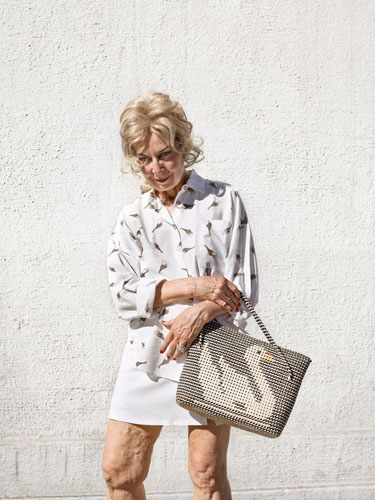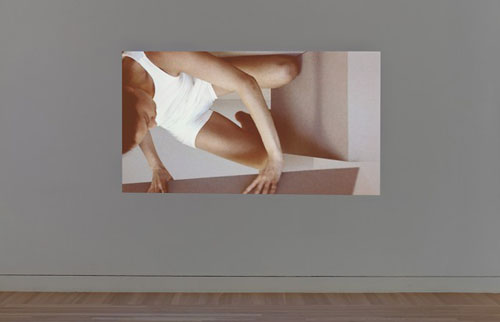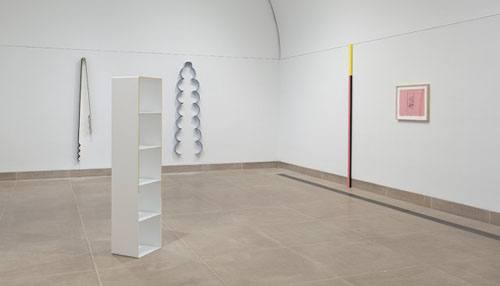During these dog days of summer, it’s hard to imagine that the invention of sunglasses did not derive from a desire to shield eyes from the sun. Instead, the smokey quartz lenses introduced in the 12th century were intended for court figures in China. The lenses served as a mask, allowing judges to hide their facial expressions and any signs of judgment during testimonies. Many centuries later, early movie stars in Hollywood would begin to embrace the dark glasses as their own means of protection from the bright lights and the fanfare.
Now an essential part of the fair weather vernacular, sunglasses have been adopted by the masses as an indispensable source of both protection and individual style. Walking down Sunset Boulevard recently, I could not help but smile when I passed a man wearing not one, but two pairs of shades: one on his face, and the second dangling fashionably from the collar of his shirt. Oh sir, how bright your future must be.
I find myself returning to the literal and metaphorical framework of these objects as a way of synthesizing my recent experiences in Los Angeles, the undulating art scene, and our roles as both observer and participant. Viewing. Filtering. Absorbing.
I discovered an insightful interview between Hans-Ulrich Obrist and the French theorist Paul Virilio recently, in which Virilio talked of the vulnerability of the view in modern visual culture:
“One is subject to overexposure. Real time overexposes us, it dazzles us. In a certain way we have not learned to wear sunglasses against the live glare. Sunglasses should be invented so that we are not dazzled by real time, that is the task. I am greatly amazed by the increased use of dark glasses. That provides a special look behind which I think something deeper is hiding and that is vulnerability of the view, to want to retire into one’s shell, to shut one’s self off, as if dark glasses were a kind of mask, a protection from view. Such as hard hats protect against shocks and thrusts, dark glasses could protect against the view.”
I’ve been in Los Angeles long enough for the initial rush of adrenaline to wear off. On certain days, there is a nice semblance of rhythm taking root. But more often than not, I continue to sort through all that is, all that is possible and all that is not yet. As I learn more about the rich fabric of the city, the communities of artists and related institutions within, and how these connect with the framework beyond, I can appreciate Virilio’s stance. It is dazzling. But it is dazzling like the Los Angeles sun, which can sometimes feel as harsh as it does inviting and intoxicating.
This duality reminds me of Katy Grannan’s Boulevard series, where she relied largely on the strong California light and the stark backdrop of white stucco walls to capture her revealing portraits of strangers in Los Angeles and San Francisco over a number of years. The physicality of her chosen subjects simultaneously evoke hardship and optimism; I continue to feel the weight of both.
In recent weeks, I’ve experienced some of this live glare – fielding rants about local museum politics, fighting to stay a step ahead at the gallery, and pretending not to take the occasional snub personally. As I prepare for an upcoming residency, excitement is accompanied by some anxiety as I negotiate work schedules and finances. On certain days, I would prefer to use those dark shades as a mask and just take a long walk. Sometimes, I still do. But I’m recognizing the importance of addressing and embracing these places of vulnerability as a means of learning valuable lessons and deepening the view.
Last month brought the opening of the highly anticipated show Made in L.A. 2012. Organized by the Hammer Museum in collaboration with LA><ART, the exhibition includes 60 artists from the LA region, with an emphasis on emerging and under-recognized artists. As the first large-scale biennial survey of the work of Los Angeles-based artists, the exhibition offers a revealing and expansive look at the current trends and practices coming out of the area. I was also curious to check out the work of some recent MFA grads included in the show.
I went to see it during the Hammer’s Bike Night, an annual event organized by the artist Lisa Anne Auerbach, whom I had the pleasure of meeting during a 2011 trip to LA with the Cranbrook Photography Department. Touring the galleries, I was especially taken with the work of two emerging female artists: Laura Riboli and Lisa Williamson. Riboli creates videos that isolate the particulars of movement and explore how they inform our understanding of objects. By interacting with the objects, she reveals their character in the process.
Lisa Williamson’s work featured a series of sculptures created specifically for a unique space called the Vault Gallery. Her objects were created with the intention of responding to the site’s location as the midpoint of the exhibition, providing a sort of visual intermission. The work is spare, installed in a way that allows ample room to consider the richness of its subtleties. I found the work of both artists most compelling in the methods they used to respond and adapt to their space. Thoroughly and thoughtfully considered, both also retain a refreshing sense of levity.
Currently, five finalists chosen from among the 60 participating artists are being considered for The Mohn Award, funded by LA philanthropists and art collectors Jarl and Pamela Mohn. The $100,000 award will be distributed over two years to an artist from the exhibition and will be accompanied by the publication of a book on their work. The Mohn Award follows in the tradition of the Tate’s Turner Prize and the Whitney Museum of American Art’s Bucksbaum Award. An interesting twist comes from the fact that the Mohn Award recipient will be chosen by the public.
This establishment of such an award for emerging and under-represented artists is encouraging; most awards of this level are geared towards artists rooted in well-established careers. With the integration of a public vote, it is also reminiscent of the unique structure of Art Prize in Grand Rapids. When considering the vulnerability of the view, this structure begs questions about how and where value is ultimately determined (this necessitates a longer discussion, perhaps to be addressed more thoroughly in another column). In short, I’m glad it exists.
In contrast to the elaborate planning and fanfare related to such productions, I’ve also experienced equally valuable locations such as PØST. This alternative space in LA’s warehouse district was originally established by the artist Habib Kheradyar (also known as HK Zamani) in 1995, and currently hosts one month of “kamikaze” shows each July. He designed the month-long program of one-night shows “to focus on the encouraging aspects of art making and sharing, a strategy to avoid the expectation element that we are all trained to focus on.”
I am curating a group show for one of the kamikaze dates later this month, featuring the work of eight artists who have all relocated to Los Angeles within the past year. While the design of the show requires a fast and flexible approach, there remains a valuable opportunity for reflection and dialogue inspired by the individual and collective views of our new landscape.
Whatever the framework for presenting work, connecting, networking–there will always be an element of vulnerability. I think the key is not to interpret feelings of vulnerability as a weakness. Rather, I interpret this as a source of strength, as its existence indicates we are pushing into unknown or uncomfortable territory in an attempt to strengthen our work, our relationships and our careers. Following this line of thought, I’d argue against Virilio’s take on the proliferation of dark glasses as a mask. Rather, I think we view through hard-earned lenses built upon our education and past experiences, providing a rich filter for deeper understanding.
That said, sometimes it’s just as important to take off your glasses for a moment, close your eyes and simply turn your face towards the sun.









